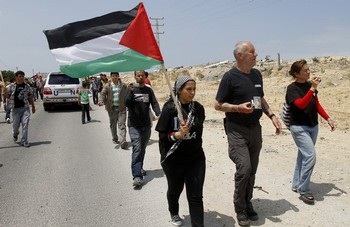Tag: Gaza
-
On June 5th support the Palestinian refugees’ right to return
22 May 2011 | International Solidarity Movement The right to return is a core goal of the Palestinian liberation struggle. Since 1947-1948, when over 750,000 Palestinians were forcibly expelled from their homes – and more than 700,000 were ethnically cleansed from their country altogether – they and their descendants have organized to demand the rectification…
-
Nakba day in Gaza
18 May 2011 | International Solidarity Movement, Gaza Nakba Day. The day of the Catastrophe. A day to mark the ethnic cleansing of 800,000 Palestinians from their homes. A day to remind themselves and the world, that one day, they will return to their homes, that they have not forgotten their land. Today marked 63…
-
Spirit of Rachel Corrie attacked by Israeli navy
16 May 2011 | Perdana 4 Peace (Monday) The Spirit of Rachel Corrie Mission, involving a Malaysian owned ship carrying aid for Palestine, has been intercepted and attacked by the Israeli naval forces in the Palestinian security zone this morning at 0654 Jordan time. Currently the ship has been forced to anchor in the Egyptian…

